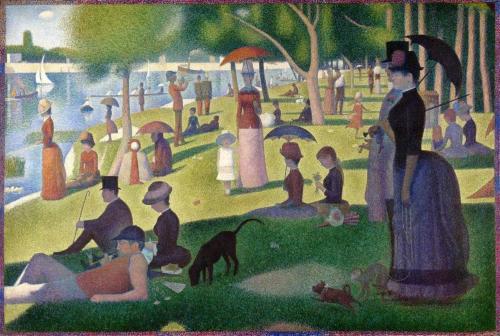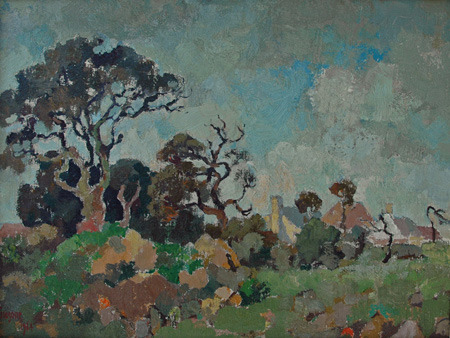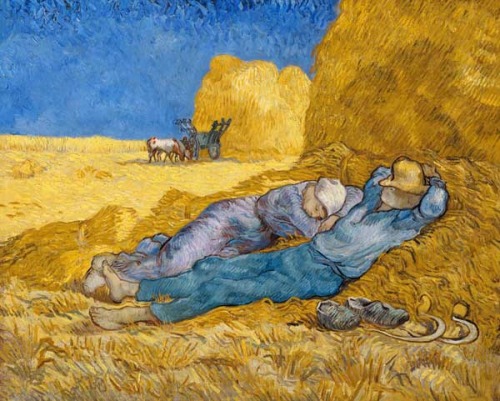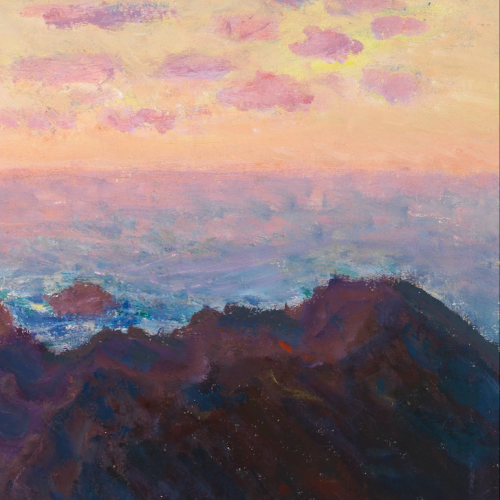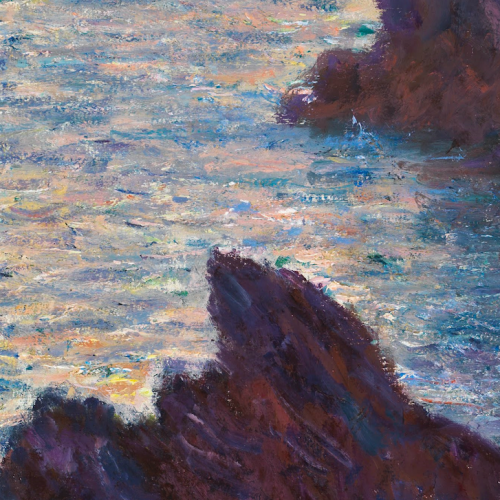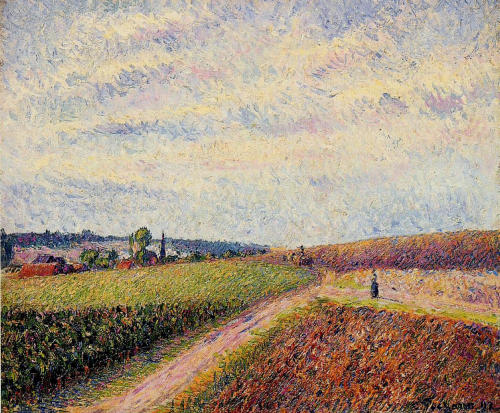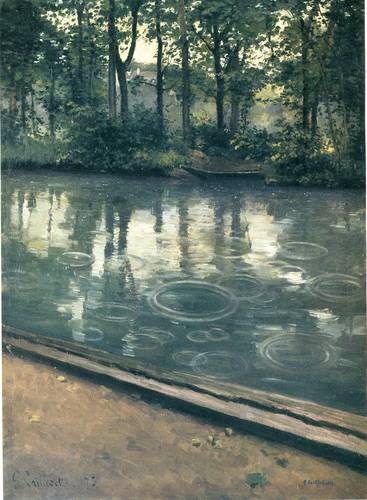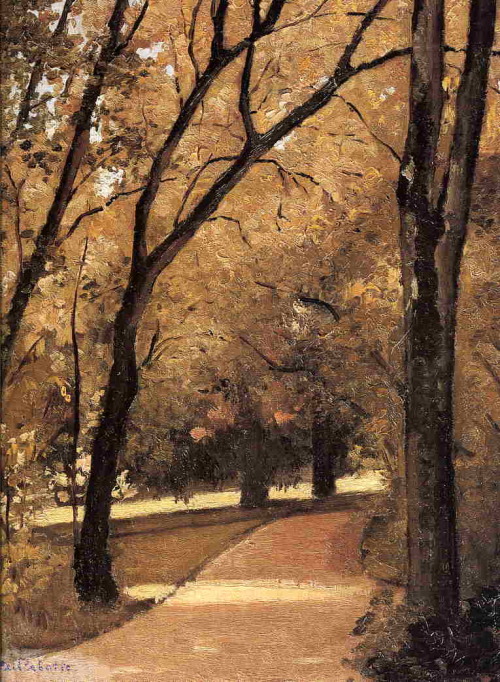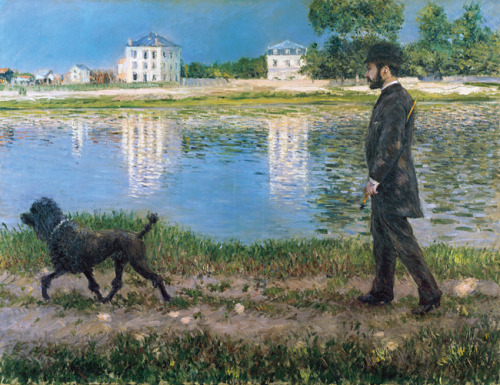#impressionism
MWW Artwork of the Day (4/1/16)
Georges-Pierre Seurat (French, 1859-1891)
Sunday Afternoon on the Island of La Grande Jatte (1884-86)
Oil on canvas, 207.6 x 308 cm.
The Art Institute of Chicago (Helen Birch Bartlett Memorial Collection)
With this picture Georges Seurat recast Impressionism, using as his guides both optical theory and idealist aesthetics. When first shown in 1886, at the eighth and final Impressionist exhibition, this impressive painting of middle-class Parisians relaxing on an island in the Seine just west of the city attracted considerable attention, and no wonder. Although many artists had portrayed similar subjects in recent years, none had used so rigorous and schematic a style. The hieratic figures, shown mostly in profile or straight-on, recall ancient Egyptian reliefs, and the deliberate compositional rhythms amount to a pointed critique of Impressionist ephemerality. As if to dispel any lingering doubts on this point, Seurat also rejected free, sketchy handling, choosing instead to render the entire scene with meticulous, dotlike touches of paint, which, viewed from a certain distance, resemble nothing so much as tapestry stitching.
Seurat conceived these little “dots” and dashes to exploit scientific theories of optical mixture, according to which discrete applications of certain colors, if immediately juxtaposed, will blend in perception to form new ones. The result was meant to be brilliantly luminous; one critic described a “vibration of light, a richness of color, [and] a sweet and poetic harmony.” Seurat arrived at “A Sunday on La Grande Jatte” by way of a prolonged trial-and-error process, during which he produced many drawings and oil studies such as the one shown here. By the time he executed the Art Institute’s panel, he had already settled on the disposition of the landscape elements but was still experimenting with the figures, whose placement remains somewhat awkward. With its faceted handling and brilliantly orchestrated greens, blues, and yellows, the study has a charming immediacy. In the final canvas, however, the artist’s grave stylization and playful irony are more prominent, and the resulting tone is complex.
The distancing quality of Seurat’s novel technique made it a fine vehicle for his dry wit, evident in the occasional visual pun—note the wafts of cigar smoke that morph into a white dog -— as well as in remarkable gallery of contemporary social types, from the brooding rower reclining at the lower left to the gawky standing man playing a French horn in the middle distance. But the pervasive self-absorption of the figures seems at odds with the integrative harmonies of the composition as a whole. The painting is rich in such enigmatic tensions, which are perhaps the secret of its enduring fascination.
The “Grande Jatte” brought Seurat fame and made him the leader of an artistic school; many painters, notably Camille Pissarro and Paul Signac, chose to adopt Neo-Impressionism, as Seurat’s manner came to be known (it is also referred to as Pointillism or Divisionism). Although short-lived as a movement (largely due to Seurat’s untimely death, at age thirty-one), the style is historically important for its introduction into avant-garde painting of new elements —- such as the simplification of form, a classical mode of spatial organization, and a sophisticated sense of decorative unity. Basing his works on abstract schemes rather than pure sensation, Seurat opened wholly unforeseen possibilities for the development of modern art.
Seurat made the final changes to “La Grande Jatte” in 1889. He restretched the canvas in order to add a painted border of red, orange, and blue dots that provides a visual transition between the interior of the painting and his specially designed white frame.
(from the AIC website)
Much more of Seurat’s work appears in the MWW exhibit/gallery:
* The Other Impressionists II: Seurat & Signac
Post link


Details: A seascape, Vartan Makhokhian, 1937

The Church of San Giorgio Maggiore, Venice, Claude Monet, 1908
Self-Portrait with an Easel, 1880,Gustave Caillebotte
Medium: oil,canvas
https://www.wikiart.org/en/gustave-caillebotte/self-portrait-with-an-easel
Post link
The Garden of Petit Gennevillers, the Pink Roofs, 1881,Gustave Caillebotte
Medium: oil,canvas
https://www.wikiart.org/en/gustave-caillebotte/the-garden-of-petit-gennevillers-the-pink-roofs
Post link
Yerres, Path Through the Old Growth Woods in the Park, 1878,Gustave Caillebotte
Medium: oil,canvas
Post link
Richard Gallo and His Dog at Petit Gennevilliers, 1884,Gustave Caillebotte
Medium: oil,canvas
https://www.wikiart.org/en/gustave-caillebotte/richard-gallo-and-his-dog-at-petit-gennevilliers
Post link

